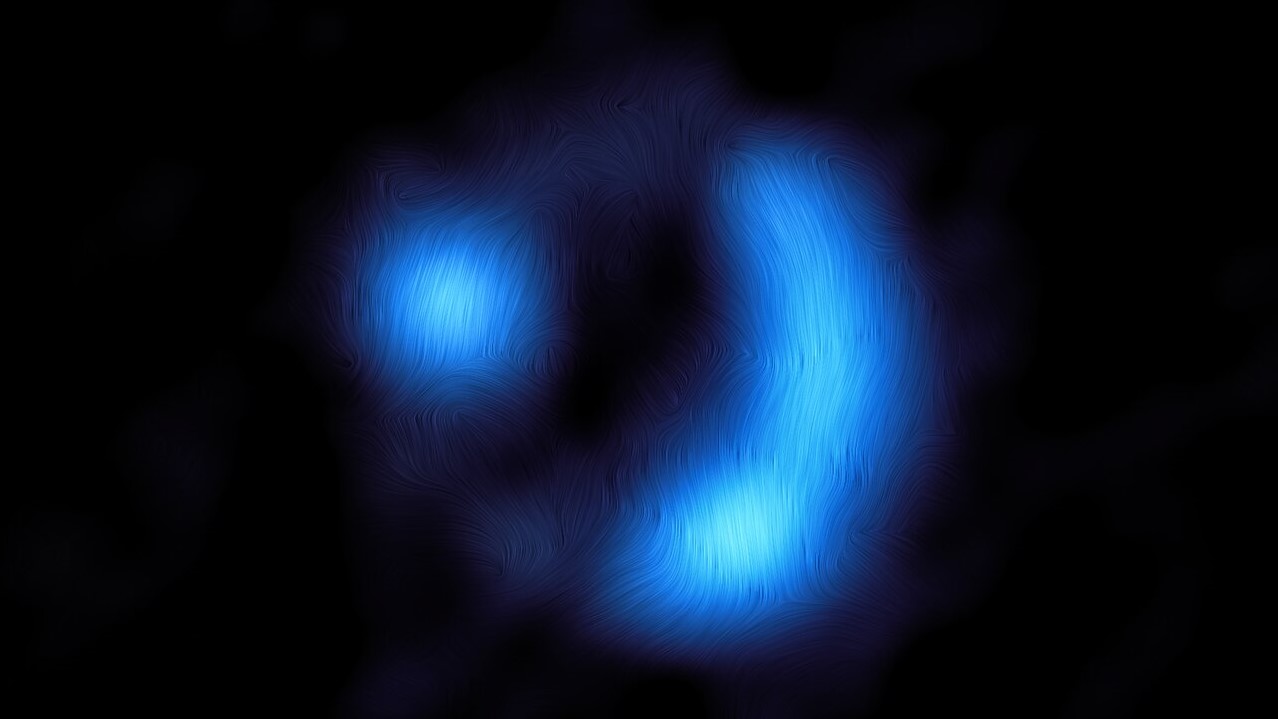Earliest magnetic galaxy ever detected offers clues about Milky Way history
The discovery of a magnetic field in a galaxy that existed less than 2.5 billion years after the Big Bang is evidence for the integral role such fields play in the evolution of galaxies.

A magnetic field 16,000 light years across has been detected in an ancient galaxy from which light is being magnified by a gravitational lens. Because it sits so utterly far away from us, we're seeing this galaxy as it was when it existed over 11 billion years ago. While all galaxies contain a giant magnetic field, astronomers have never detected galactic magnetism this early in the universe before.
The discovery was made with the Atacama Large Millimeter/submillimeter Array (ALMA) in Chile, by a team of multinational team of astronomers led by astrophysicist Jim Geach of the University of Hertfordshire in the UK.
The galaxy, known as 9io9 (short for its full identifier, ASW0009io9), was discovered in 2014 as part of a citizen science project called Space Warps, which was launched in the UK in conjunction with the BBC TV show Stargazing Live. The project resulted in 7.5 million classifications of lensed galaxies in images taken by the Canada–France–Hawaii Telescope (CFHT) Legacy Survey. The galaxy’s magnification is distorted, appearing as what's known as an Einstein ring. This is a phenomenon that occurs when the distant galaxy, the lensing foreground object (either a massive galaxy or galaxy cluster) and Earth are all in nearly perfect alignment across billions of light years.
Related: Record-Breaking Galaxy Find Sheds Light on Magnetic Universe
Geach, who initially spearheaded observations of 9io9 in 2014, has led a team in using ALMA to detect emitted light from interstellar dust grains, which often contain metals, in the distant galaxy. These dust grains are aligned to the galaxy’s magnetic field. This alignment results in the polarization of the long-wavelength light emitted by the dust. When light is polarized, it means the photons are oscillating in a preferred direction. It’s a bit like looking at the galaxy with sunglasses, which permit only light of a certain polarization to pass through them.
All galaxies, including our own Milky Way galaxy, contain a widespread magnetic field that is woven into the fabric of a galaxy’s clouds of molecular gas and dust. However, the origin of these magnetic fields is a mystery.
"We actually know very little about how these fields form, despite being quite fundamental to how galaxies evolve," said Enrique Lopez Rodriguez of Stanford University, who is a member of Geach’s team, in a statement.
Get the Space.com Newsletter
Breaking space news, the latest updates on rocket launches, skywatching events and more!
We see the 9io9 galaxy during a time when the universe was just 2.5 billion years old.
"The discovery gives us new clues as to how galactic scale magnetic fields are formed," said Geach.
Indeed, 9io9 tells astronomers that however galactic magnetic fields form, they must do so relatively early and rapidly.
The detected magnetic field is not particularly strong, measuring 500 microGauss or less. That's a thousand times weaker than Earth’s magnetic field, which ranges between 25 and 65 Gauss. This is fairly typical of galactic magnetic fields — the Milky Way’s magnetic field is even weaker, at just 20–40 microGauss. They are weak because the galactic magnetic fields are stretched across huge distances, which dilutes them — in the case of 9io9, it is spread across 16,000 light years.
Geach’s team suspect that intense bouts of star formation early in 9io9’s life helped to propagate the magnetic field across the galaxy. In turn, galactic magnetic fields threaded through molecular gas clouds are known to have an influence on subsequent star formation by directing streams of gas and dust to common locations. Where the streams meet, the density and temperature of the gas rises until star-birth ignites.
An outline of the research was published on Sept. 6 in the journal Nature.
Join our Space Forums to keep talking space on the latest missions, night sky and more! And if you have a news tip, correction or comment, let us know at: community@space.com.

Keith Cooper is a freelance science journalist and editor in the United Kingdom, and has a degree in physics and astrophysics from the University of Manchester. He's the author of "The Contact Paradox: Challenging Our Assumptions in the Search for Extraterrestrial Intelligence" (Bloomsbury Sigma, 2020) and has written articles on astronomy, space, physics and astrobiology for a multitude of magazines and websites.









